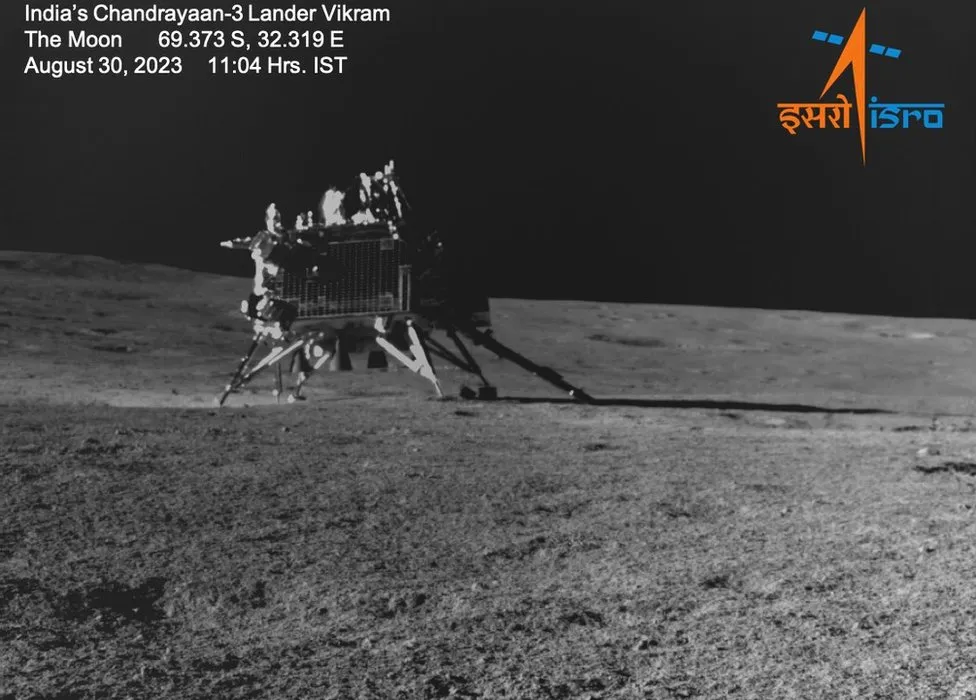Hours before the rover was put to bed on 2 September, Isro said Pragyaan "has traversed over 100m [328 feet] and is continuing".
That's quite a long way to travel for the six-wheeled rover, which moves at a speed of 1cm per second.
What is also significant, Ms Mitra says, is that it has been able to stay safe and avoid falling into the craters that dot the Moon's little-explored south pole region.
The rover, she says, has a special wheel mechanism - called rocker bogie - which means that all its wheels don't move together, helping it traverse up and down, but it may not be able to climb out if it falls into a deep crater. So it's important to make it go around the craters or even retrace its steps. And that, Ms Mitra adds, is done by scientists at the command centre who are "watching the Moon through the rover's eyes".
"The rover is not automated and its movements are controlled from the command centre which acts on the basis of the pictures it sends.
"There's a slight delay before they reach the command centre because of the circuitous route they take - Pragyaan sends them over to the lander which sends them on to the orbiter to pass them on to Earth."
The first set of data collected from the lunar topsoil and up to the depth of 10cm (4 inches) below the surface from a probe onboard the Vikram lander showed a sharp difference in temperatures just above and below the surface.
While the temperature on the surface was nearly 60C, it plummeted sharply below the surface, dropping to -10C at 80mm (around 3 inches) below the ground.
The Moon is known for extreme temperatures - according to Nasa, daytime temperatures near the lunar equator reach a boiling 120C (250F), while night temperatures can plunge to -130C (-208F). And temperatures of -250C (-410F) have been recorded at craters which never receive any sunshine and remain permanently in shadows.
But, Ms Mitra says, this wide variation in temperature is significant because it shows that Moon's soil - called lunar regolith - is a very good insulator.
"This could mean it could be used to build space colonies to keep heat and cold and radiation out. This would make it a natural insulator for habitat," she says.
It could also be an indicator of the presence of water ice below the surface.
When a laser detector mounted on the rover measured the chemicals present on the lunar surface near the south pole, it found a host of chemicals such as aluminium, calcium, iron, chromium, titanium, manganese, silicon and oxygen.
But the most important of the findings, scientists say, relate to sulphur. The instrument's "first-ever in-situ - in the original space" measurement "unambiguously confirms" the presence of sulphur, Isro said.
Sulphur's presence on the Moon has been known from the 1970s, but scientists say the fact that the rover has measured sulphur on the lunar surface itself - and not inside a mineral or as part of a crystal - makes it "a tremendous accomplishment".
Ms Mitra says the presence of sulphur in the soil is significant on a number of counts.
"Sulphur comes usually from volcanoes so this will add to our knowledge of how the Moon was formed, how it evolved and its geography.
"It also indicates the presence of water ice on the lunar surface and since sulphur is a good fertiliser, it's good news as it can help grow plants if there's habitat on the Moon."

